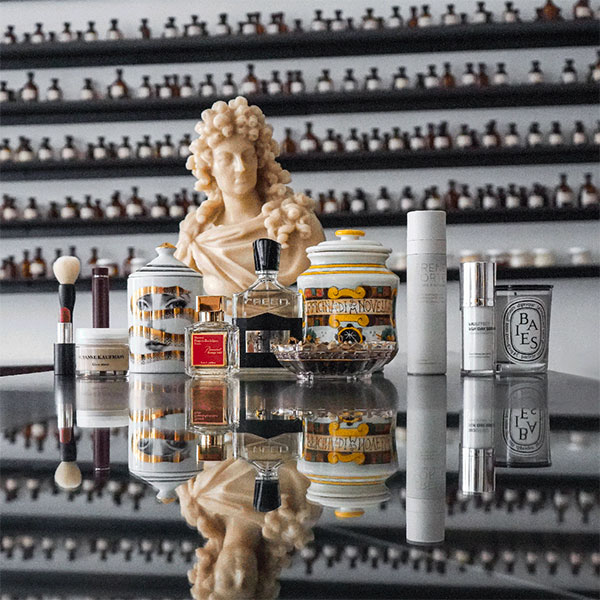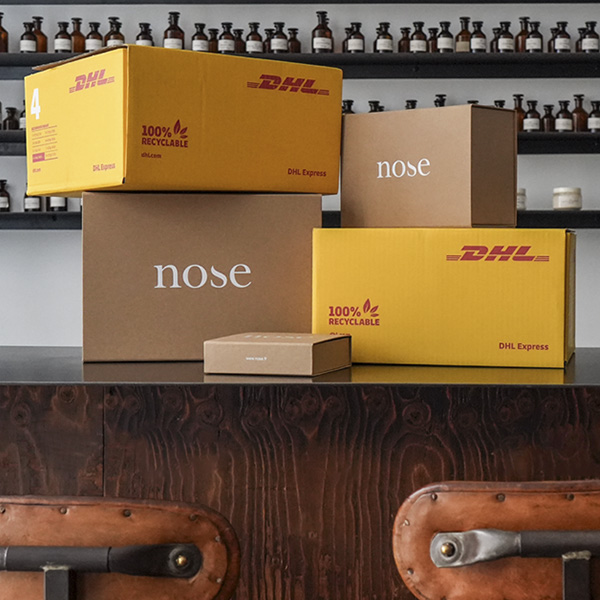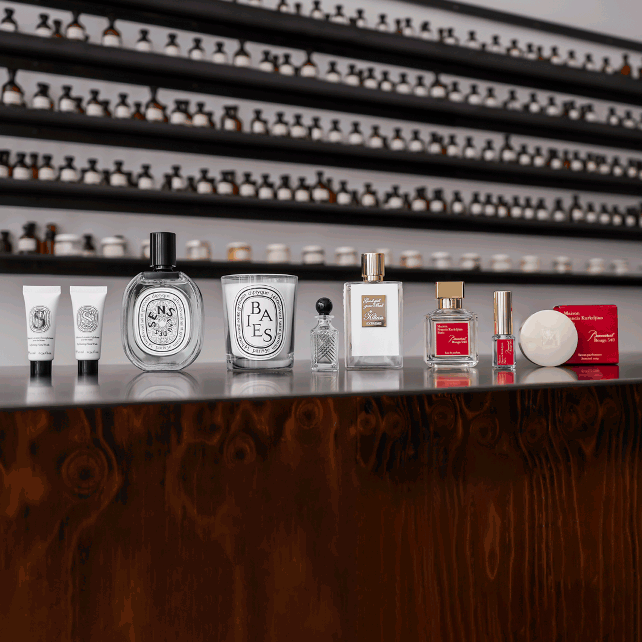
100% authentic products & official reseller for :
creed, maison francis kurkdjian, kilian paris, marc antoine barrois
You have a question? Please consult the Frequent Asqued Questions (FAQ).
If you don't find your answer, please contact us:
by email: info@noseparis.com
by phone: +33 1 86 47 72 76
To know more about returns and refunds, please consult Terms and Conditions of Sales, section 6 Right to and period of withdrawal.
Nose ship perfume by international airfreight and by La Poste for the services Colissimo Expert and Chronopost Classic to more than 75 countries.
To know more, please consult the Frequent Asked Questions (FAQ)
Nose proposes an olfactive diagnosis where 5 perfumes will be proposed among a list of 500 curated ones.
Do the diagnosisNose proposes an olfactive diagnosis where 5 perfumes will be proposed among a list of 500 curated ones.
Do the diagnosisNicolas was an early starter, going into perfumery at 14. It was during a trip to Grasse that he met his first mentor. Jacques Maurel. He then joined Takasago and worked with two master perfumers, Françoise Caron and Francis Kurkdjian. At the age of 27 he joined Fragrance Resources.
What is your motto?
There’s a phrase from the book “Que sais-je/ Le Parfum” by Edmond Roudnitska that I like a lot: “We do not lack materials but imagination”.
What’s your oldest olfactive memory?
My parents had a restaurant and we lived on the floor above. Every night I would be in bed well before the first seating, but each time a certain regular guest would come for dinner you’d always find me in the middle of the restaurant. The perfume of this guest would tickle my nostrils; I’d slip out of my room at a time when I was just beginning to learn how to walk and my nose would, to everybody’s surprise, lead me straight to his table. He wore Kouros by Yves Saint Laurent.
What was the triggering element that inspired you to become a perfumer? Who have been your mentor(s)?
I’ve been so lucky as to make some beautiful encounters, connecting tradition and modernity. When I was 14 years old I was vacationing in Grasse and I met the perfumer Jacques Maurel (who’d been working for Delaire for years). People told me that he was capable of reconstruct any perfume “by nose” - to me that was like meeting Superman! I studied by his side for five years, following Jean Carles’ method, which he had developed himself during his apprenticeship with his grand-father. He gave me everything, uncompromisingly, including the most essential - passion.
Then, when I was 19, I met Francis Kurkdijan and I became his student. My career has always had a genuine continuity, which has consisted in working “by the nose”, using short formulation processes and working with a great amount of diligence. I’ve also worked with Françoise Caron, in particular for Astier de Villate.
What are your favourite raw materials, and why?
There are too many! Cedar, Iris, Osmanthus, Ambroxan, Vetiver, Ambrette; the list goes on. I like materials that bring substance and texture - that allow you to structure a scent. Through my mentors, I’ve also acquired a certain taste for white flowers. What a pleasurable experience is it to explore the fruity facets of a Sambac!
Could you describe the three perfumes carried by Nose (Attache moi, Lithium and Astier de Villate) in two sentences?
Attache moi / It was a time that was a time: This perfume is actually the fruit of an artistic collaboration with the English artist Shezad Dawood. The request was to create an olfactive landscape for a film that was made with people who survived the hurricane Sandy. The result is a reflection of the reconstruction of a civilisation after a catastrophe, an apocalypse. It’s the reinvention of social, vestimentary and sexual codes. I approached it as the perfume of a tribe, such as in Mad Max or Water World. The idea of something primal and animalistic came to me immediately, and the fact that some parts of the film are shot on the beach oriented me towards a note of grey Amber. This note is accompanied by leather and incense, and has a slightly salty composition with a hint of Immortelle - to strengthen the echo of warm sand and also to hint back to the survivors.
I have made several creations for Astier de Villate, always in collaboration with Françoise Caron.
Then there’s also Nu Be - Lithium: An interpretation of a metal translated through cedar and iris, having an almost mineral density. Lithium oxidises very easily so I wanted to create a contrast between a dry and woody part on one hand and warm spices on the other, using cumin and saffron to create a fusing and vibrant dynamic.
Despite your young age, how would you describe the creative signature in your fragrances?
I’m not sure that I have a signature - I would not hope so. That would mean that my formulation processes were becoming automatisms. Quite on the contrary, I ask myself a lot of questions about how to concoct novelties - whether they’re brand new interpretations or adaptations of classic formulas. Our profession is all about exploration! A perfume is never a mere coincidence; it’s thought through and developed methodically.
(Personally, my inspiration often comes from natural essences, which is something that’s been inherent to me ever since my apprenticeship in Grasse.
It’s important to stimulate one’s olfactive memory, to be confronted with raw materials. The better you know them, the more you can make of them. As soon as possible I will participate in harvests - in India, Italy or elsewhere. The thirst for knowledge is vital!

100% authentic products & official reseller for :
creed, maison francis kurkdjian, kilian paris, marc antoine barrois

no custom, nor clearance and VAT-free under $800
free express DHL delivery from Paris to New York, Los Angeles, Chicago, or Miami
within 2-3 working days for any order above €167 (before VAT) / $175
(all information here)

French (euros) prices (likely among the most competitive)
3 free samples with orders from 80€ and 6 from 160€
+500 gifts available with purchases across 80% of our brands